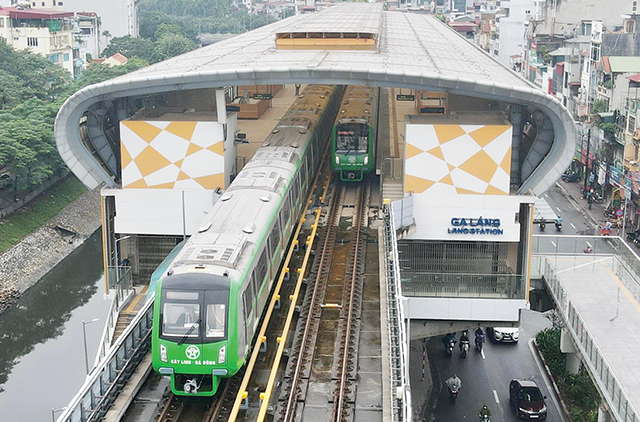Nearly 14 years since its initial approval, in October 2010, construction of the Metro Line No. 2 project in Ho Chi Minh City, which connects Ben Thanh Market in District 1 and Tham Luong Depot in District 12, with a length of more than 11 km, including around 9 km running underground, remains ongoing.
The long delay has been attributed to many factors, primarily slow site clearance and the necessary relocation of technical infrastructure. Site clearance and compensation was rescheduled for completion by June 2020, but as of mid-March only 89.23 per cent of land had been handed over. The remainder is still in limbo, as a result of the failure of the investor and affected households to agree on a compensation plan.
Negative impact
Slow site clearance, compensation, and resettlement has led to an annual increase in the project’s investment cost of around VND68 billion ($2.72 million). The Ho Chi Minh City Urban Railway Management Board (MAUR) is now working to have land handed over to contractors by the second quarter of 2025, to begin construction of underground and aboveground stations and fully complete the project by 2030, as now scheduled.
In Hanoi, meanwhile, site clearance delays have also caused the Nhon - Hanoi Railway Station metro line project to regularly break deadlines. Land acquisition and clearance in Dong Da, Hoan Kiem, and Ba Dinh districts, where the project passes through, were announced in 2011-2013 but not completed until 2021-2022 instead of June 2015, as initially planned.
The main contractor ceased construction in August 2021 as a result, and sought compensation of over $100 million and submitted a complaint to international arbitration. At that time, construction of the underground section had reached just 32 per cent.
Clearly, delays in land acquisition, compensation, and clearance have led to higher investment costs and cut investment efficiency. According to Mr. Le Net, an arbitrator at the Vietnam International Arbitration Center (VIAC) and a lawyer with LNT & Partners Law Firm, site clearance is one the most important steps in developing metro projects. If land is not cleared before the project begins, it will have a negative impact on project progress and push up investment costs for both investors and the State.
“Site clearance delays will also lead to complaints about prolonged project implementation,” he said. “Contractors cannot receive land to begin construction if the land is not cleared.”
Complaints and rising costs
Figures from LNT & Partners, which provides consultancy services for metro and expressway projects and deals with disputes submitted for both domestic and international arbitration, show that the majority of complaints from contractors are related to site clearance.
Mr. Net noted that the nature of the site clearance process constantly changes and depends on actual conditions. Disagreements between investors and affected households regarding compensation are a key factor behind delays.
The relocation of technical infrastructure such as water or power supply or waste treatment facilities also meets many difficulties, as they can be complex undertakings and are often located underground.
Legal matters
Regarding legal obstacles, he said the draft Law on Capital needs to have simplified and flexible mechanisms for the process of conducting planning and a separate mechanism to facilitate the implementation of transit-oriented development (TOD) projects, which include metro lines.
The amended Land Law also has certain shortcomings. For example, the site clearance process is required to undergo nine steps, but at many projects this begins after the project’s investment policy has been approved.
Construction of resettlement areas for affected households also often gets underway after the investment is approved, causing delays to site clearance.
“In order to speed up public investment and upgrade transport infrastructure, it is necessary to separate site clearance into sub-projects for localities to implement in advance, which would enable them to mobilize different resources during land auctions and help ensure that land is ready for projects when it is actually needed,” said Professor Hoang Van Cuong, a Member of the National Assembly’s Finance and Budget Committee.
Site clearance and resettlement must be considered key measures in a project and be implemented early in the process, according to Mr. Do Dinh Phan, Deputy Director of the Hanoi Transportation Works Construction Investment Project Management Authority. To speed up the implementation of the Ring Road No. 4 project in the Hanoi capital region, the city has proposed separating site clearance into an independent sub-project to be implemented immediately after the investment policy is approved. This would help shorten the time needed to complete site clearance.
Mr. Net said site clearance delays are caused not only by regulations but also by people. Many localities have effectively conducted site clearance tasks thanks to the close direction of local authorities.









 Google translate
Google translate